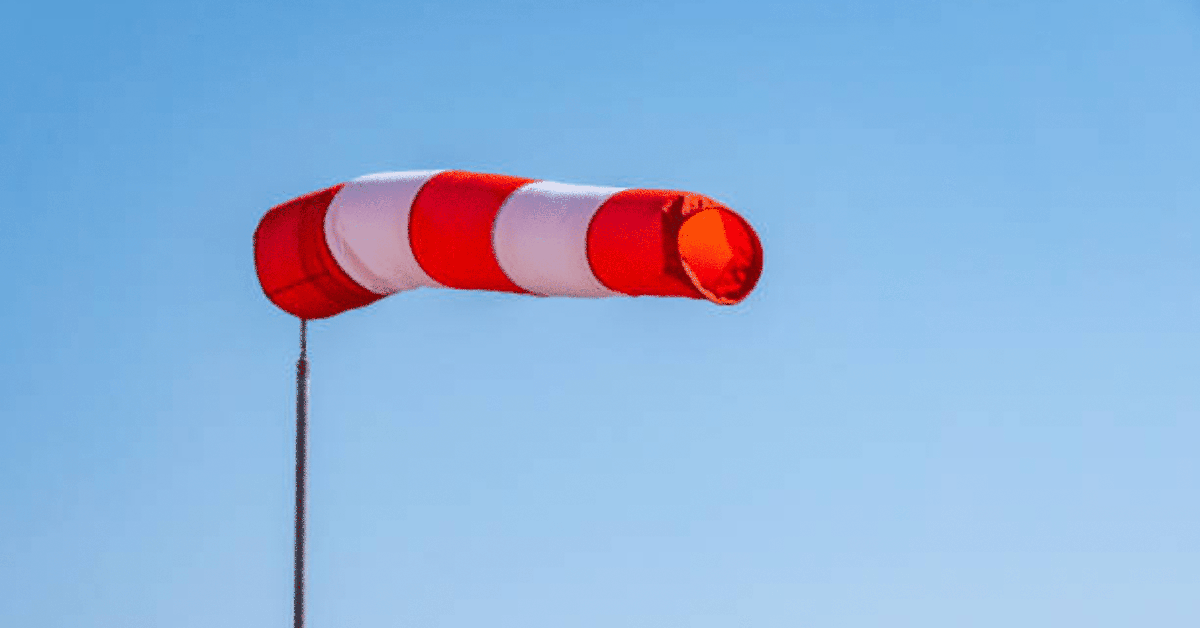In the world of track and field, accurate measurement of wind speed is crucial for both training and competition. Whether you're a coach, an athlete, or a sports enthusiast, having the right wind gauge can make a significant difference in performance analysis and adherence to competition standards. This blog will guide you through the diverse range of wind gauges available—from compact, pocket-sized models suitable for casual use to professional-grade equipment designed for official events. We'll help you understand the key features to look for, the benefits of various types, and how to choose the perfect wind gauge to meet your specific needs. With this knowledge, you’ll be able to make an informed decision when purchasing your next wind gauge at TrackBarn.
Understanding Wind Gauges
In track and field, the measurement of wind speed and direction is not just a technicality—it's a necessity for fair competition and effective training. Wind gauges, or anemometers, are used to assess these environmental conditions accurately.
The Basics of Wind Gauges
Wind gauges are essential tools in many fields, especially in sports like track and field where wind can significantly impact performance. These devices measure the speed and sometimes the direction of the wind, providing data that can influence event outcomes, training methods, and record validations. For athletes and coaches, understanding wind conditions helps in strategizing races and adjusting techniques accordingly.
How Wind Gauges Work
Wind gauges generally operate using one of several methods: cup, vane, hot-wire, or ultrasonic sensors. Each type has its mechanism and ideal use case:
- Cup Anemometers: Feature rotating cups that catch the wind, with the speed measured by how fast the cups spin. This type is common at weather stations.
- Vane Anemometers: Use a turbine-like mechanism turned by the wind; the orientation of the vane shows wind direction, making them useful for outdoor sports.
- Hot-Wire Anemometers: Measure wind speed based on the cooling rate of a heated wire. These are highly sensitive and used in situations where precision is crucial.
- Ultrasonic Anemometers: Utilize sound waves to measure wind speed and direction. They are highly accurate and reliable, ideal for professional sports and scientific research.
Types of Wind Gauges
Wind gauges vary greatly in size, functionality, and complexity, catering to different levels of usage—from casual to professional. Understanding these variations is crucial for choosing a gauge that fits your specific requirements.
Pocket-Sized Wind Gauges
Pocket-sized wind gauges are ideal for casual use and basic training purposes. These compact models are highly portable, easy to use, and generally more affordable, making them a great choice for amateur athletes, coaches, and sports enthusiasts who need to measure wind speed occasionally.
Features and Benefits:
- Portability: Small enough to fit in a pocket, these gauges can be easily carried to different training locations.
- Ease of Use: Typically feature a simple interface that doesn’t require extensive meteorological knowledge.
- Cost-Effective: Offer essential wind measurements without the high cost of more sophisticated systems.
Best Uses:
- Casual training sessions where detailed environmental data is not critical.
- Outdoor activities like kite flying or model airplane flying where basic wind speed information enhances the experience.
Professional Wind Gauges
Professional wind gauges are designed for high accuracy and durability, meeting the needs of competitive athletes and official competitions. These devices are built to strict standards, ensuring that they deliver precise measurements required for valid competition results and advanced training analytics.
Features and Specifications:
- High Accuracy: Provide detailed readings with minimal error, crucial for environments where precise wind data is necessary.
- Robust Construction: Made to withstand repeated use in various weather conditions without degradation of performance.
- Regulatory Compliance: Meet the specifications set by sports and meteorological authorities for official use.
Why They Are Crucial:
- Essential for competitions where wind conditions might affect the outcome, such as track and field events.
- Used in training to fine-tune athletes' performances under conditions similar to those they will face in competitive settings.
Key Features to Consider
When shopping for wind gauges, whether online at TrackBarn or elsewhere, it's crucial to evaluate a number of features that can affect the device's performance and suitability for your requirements. This consideration ensures that you invest in a tool that will serve you well, whether for training or competition.
Accuracy and Sensitivity
The accuracy and sensitivity of a wind gauge are paramount, especially in settings where precise environmental data can influence the outcome of sporting events or the quality of training sessions.
Importance of Precision:
- Accuracy: Look for gauges that offer high precision, typically within a small margin of error. This is critical for ensuring that the wind readings are reliable and can be used confidently in data analysis and competition settings.
- Sensitivity: A sensitive wind gauge can detect slight changes in wind speed and direction, providing comprehensive data that can help in fine-tuning athletic performance.
Technical Specifications to Look For:
- Measurement Range: The range of speeds the gauge can measure, important for various sporting contexts.
- Response Time: How quickly the gauge updates its readings, which can be crucial for rapidly changing conditions.
Durability and Portability
For both casual users and professional athletes, the durability and portability of a wind gauge are critical factors that influence usability and lifespan.
Build Quality:
- Materials: Durable materials that can withstand exposure to different weather conditions without corroding or breaking.
- Design: Robust designs that can endure being transported frequently without damage.
Ease of Transport:
- Size and Weight: Consider the size and weight of the gauge, especially if it needs to be carried to various training locations.
- Protective Features: Look for models that come with cases or protective covers to safeguard them during transport.
Choosing the Right Wind Gauge for Your Needs
Selecting the appropriate wind gauge depends significantly on the context in which it will be used. Different scenarios require varying levels of precision and durability, and understanding these needs will help you make the best purchase.
For Training and Casual Use
For those involved in casual training or who need a wind gauge for non-competitive purposes, certain models offer the best balance of functionality and ease of use without the high cost of professional equipment.
Recommended Models:
- Features: Look for models that provide basic wind speed measurements and are easy to operate. These usually have fewer features but are more user-friendly for beginners or casual users.
- Benefits: These gauges are typically more affordable and sufficiently accurate for training purposes. They are also lightweight and portable, making them easy to carry to various training sites.
Best Uses:
- Training sessions where understanding general wind conditions is sufficient.
- Outdoor recreational activities where knowing wind speed can enhance the experience.
For Official Competitions and Professional Use
Professionals and competitive athletes need wind gauges that not only meet specific regulatory standards but also provide the highest level of accuracy and reliability.
Recommended Models:
- Features: Choose gauges that are certified for use in competitions, offering detailed data on wind speed and direction with high accuracy.
- Benefits: These devices ensure compliance with competition rules and provide reliable data that can influence training and competition strategies.
Best Uses:
- Official track and field competitions where accurate wind measurement is crucial.
- High-level training where precise environmental data is necessary to optimize performance and strategy.
Conclusion
With the wide variety of wind gauges available, selecting the appropriate model to meet your track and field needs has never been easier. At TrackBarn, we pride ourselves on offering a selection that caters to both amateur enthusiasts and professional athletes. Whether you need a compact gauge for light training or a professional device for competitive events, our comprehensive guide and expertly curated inventory ensure that you find a solution tailored to enhance your performance. Explore our options today to equip yourself with a reliable tool for precise environmental measurements.
Frequently Asked Questions (FAQs)
Q: What is the most important feature to look for in a wind gauge for professional use?
Ans: The most crucial feature for professional use is accuracy. A highly accurate wind gauge ensures that the data collected is reliable for competition and advanced training analytics.
Q: Can a pocket-sized wind gauge be used for official competitions?
Ans: Generally, pocket-sized wind gauges do not meet the accuracy requirements for official competitions. It’s advisable to use professional-grade gauges that are certified for competition use.
Q: How do I maintain a wind gauge to ensure its longevity?
Ans: Regular maintenance includes cleaning the device, checking for any damage or wear, and storing it in a protective case when not in use to protect it from environmental elements.
Q: Are there any specific brands of wind gauges that TrackBarn recommends?
Ans: TrackBarn features a variety of reputable brands known for their quality and reliability. Visit our website or contact our customer service for recommendations based on your specific needs.
Q: What should I do if my wind gauge gives inconsistent readings?
Ans: If your wind gauge starts giving inconsistent readings, check for any obstructions or damage. Calibration may also be necessary. Consult the manufacturer’s instructions for troubleshooting or consider professional servicing.

